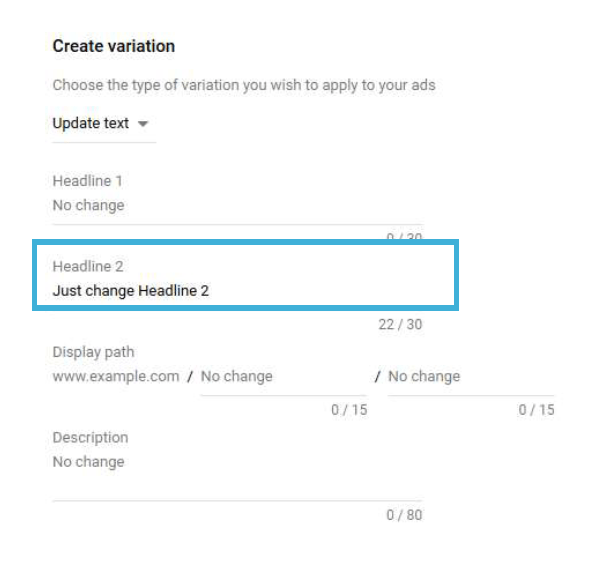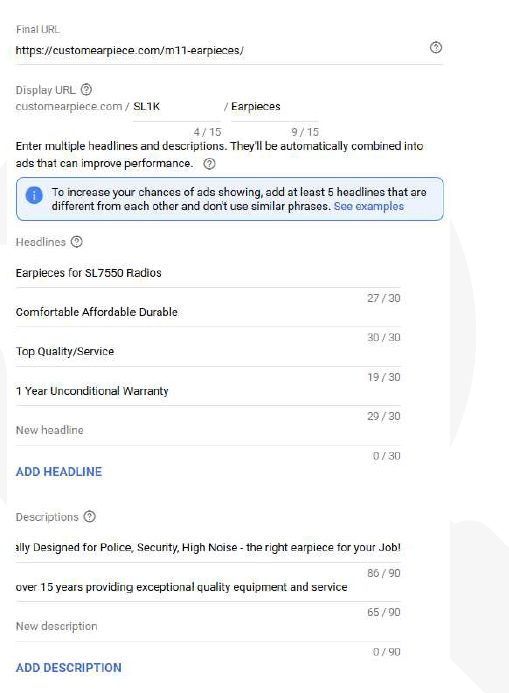7 Key SEM (PPC and Social Media Marketing) Takeaways from SMX Advanced 2018
Let’s face it, the digital media industry evolves quickly making it critically important for Digital Marketers to stay on top of the latest SEM, PPC Strategy, and Social Media Marketing news, trends and updates. SMX Advanced is a great platform for this! I attended SMX Advanced in 2017 and gained a lot of great insights, and I was lucky enough to attend this year’s conference as well! Although the basics of SEM have remained consistent, search engines are making advancements in terms of targeting and are getting smarter in leveraging machine learning and AI to be more effective. This year’s conference was mainly focused on these two key areas and today I’m going to share my top 7 insights from the conference.

Audiences are Becoming More and More Important
Google and Bing are always investing in finding smarter ways to reach out to the right audience and thus are producing more audience targeting options on their respective Search networks. Some of the new audience targeting recently rolled out includes: ‘custom intent’ for Google Display and YouTube, ‘in-market’ audience for Search, and LinkedIn audiences on Bing ads.
To drive the best results, you should always audit existing audience performance. Never just “set it and forget it”. Instead, you should be continuously analyzing your current audience performance to find if you are getting the desired results (or not). Some of the ways to modify your current audience list are:
- Ensure cookie pools are growing – If your audience size is not growing that means you might end up serving to the same audience over and over which will further result in ad fatigue and poor campaign performance.
- Test various cookie durations – Cookie duration is important to consider when you are working on your remarketing strategy. It can vary from product to product based on how long your sales cycle is and how much traffic you are driving to the website. For example, a B2B product like a software platform will likely have a longer sales cycle, so you should consider a longer cookie duration for your remarketing list. Also, consider changing the call to action for users falling under different cookie windows to try to re-engage them over time.
- Focus on Negatives – Always consider refreshing the negative audience list to drive the best results. Marketers set-up a negative audience list at the start of the campaign, but how often does it get refreshed during the campaign period? Any time a new conversion point is added on the website, the negative audience list should be updated to exclude the new converters. You can find more information on negative audiences in my blog from last year.
Ad Copy Writing Needs to Shift
In response to changes in user search behaviour, we should reconsider the way we write ad copy for our SEM campaigns. Historically, including keywords in the ad copy was important to attain a high-quality score, so most advertisers would write ad copy with the keywords in mind; however, this generally leads to lazy, boring, and lame ads.
Search engines get billions of searches every day and 15% of those searches have never been searched before. Today, 2/3 of all search terms are 3 words or longer and it will take the average consumer 8 interactions with the brand before they become a customer (Internet Live Stats, n.d.). Search is quickly evolving, and we now search for (and expect) longer, more specific answers. With voice search growing and more conversational consumer http://SOURCE http://www.internetlivestats.com/google-search-statistics/).search behaviour at play, the long tail search is becoming the new normal. By adapting your ad copy to answer the questions users are searching for, you will inspire click-through with your highly relevant ads.
Even for more simple keyword-based searches such as “refrigerator repair”, we aren’t able to capture audience insights or intent. Are they a homeowner, kitchen manager, student, busy parent, or a past customer? No single ad copy can be perfect to target each of them and thus you’ll need an army of ads to be effective!
For this, we should have multiple ads in an ad group. Having more ads will increase the chances of having a better CTR as it increases the chances of serving the right ad to the right audience. Here are some smart features available in Google AdWords which we can leverage to have multiple ad variations:
- Ad Variations – It can be used to quickly update the messaging in the ads, find and replace old messages with the new ones, and swap headlines 1 and 2.

- Responsive Ads for Search – Similar to responsive display ads, Google has recently launched responsive ads for search where you can show up to 3 different headlines and 2 lines of descriptions. Google will dynamically test ad messaging, offers, and call to actions based on the audience and serve what is working best.

- Unique Ads for Remarketing Audiences – This one’s going back to basics but worth noting since it is so important. You should definitely use different messaging for audiences who have already engaged with your brand. These are more qualified users and they would benefit from seeing a different ad compared to audiences who are getting exposed to your brand for the first time.
Humans and Machines are Better Together
The best AND the worst thing about computers is they do what you tell them to. With the growing application of artificial intelligence, machine learning, and automation in the industry, we need to understand which projects need AI and automation vs. human involvement. Each party has its own strengths (and limitations):
Humans
- Strategy – A plan of action is needed to achieve the desired goals, which involves brainstorming, research, and well thought out recommendations. This requires human involvement.
- Creativity and Storytelling – Humans are more creative in ad copywriting and in understanding what is going to resonate with their target audience. The human touch allows us to engage users with different messaging at various stages in the marketing funnel based on our experiences and perceptions.
- Reacting Quickly to Market Changes – Both internal and external factors play a big role in any marketing strategy. Whereas machines can be used to create automated rules to take actions with prefilled criteria, they are not able to take actions on quickly changing external factors. The human is needed to react quickly to those changes and take actions.
- Auditing the Machines – Every time we need to change the rules or back-end process for an AI or machine, a human is needed to program and update it. Machines should be audited by humans on a regular basis to ensure effectiveness.
- Empathy – This one is huge! Machines can’t empathize which is a big component for any significant business decision.
Machines
- Math – Math is hard, and machines are MUCH faster with calculations. Advanced, fast calculations can be used across a variety of applications – creating automated rules to help with bidding or running complex data sets to find statistical significance.
- Inputting Repeatable Data – Machines can be configured to pull repeatable data for humans, such as regular/daily AdWords reports.
- Conversations from human-driven inputs – Chatbots are becoming more and more common for customer service. This is AI at work, and it performs extremely well if programmed right.
The best solution would be to build a hybrid system where both humans and AI are playing their roles and driving efficiencies across the entire project. We can use machine learning to sort complex data and come up with suggestions in a fast and easy interface to let humans validate. For example, use automated rules to filter out poor performing keywords and ad copy for you and then you can investigate the sorted data and make decisions.
The main takeaway here is AI has been created to transform/evolve jobs, not take them. Where computers will take over basic bidding, reporting, and data entry functions, humans will still retain creative, strategic, and decision making roles.
Tell Compelling Stories with Data
Understanding there are multiple stakeholders working on a project and each one of them might expect a different outcome, we should also think of reports the same way we think about ads. How do you present the right metrics to the right audience in the right context?
Experts suggest structuring your reports for three main audiences: CMOs, Directors, and managers. Choose the metrics and KPIs your stakeholders will care about and present reports to help influence or guide their specific decisions. Here are a few things to consider when presenting your PPC report to each:
- CMOs – CMOs want to accelerate overall revenue growth for the business and PPC channels only make a portion of overall online channels. Present your report like a story. Most executives think in a top-down manner and are strapped for time, so start your report with the most important recommendation and what should we do right now, followed by key insights and findings with supporting metrics.
- Directors – Directors measure how each department contributes to overall business growth. Start the report with the main finding from the campaign (E.g. we spent $50k on Paid Search and drove 700 leads for the software and increasing the budget by 10% will lead to 15% increase in total leads) and then share results and numbers in detail.
- Managers – They are the ones who manage the day to day and campaigns on a regular basis. They care about how many leads campaign drove at what cost per lead and how the cost per lead is trending month over month. They will also likely look at cross-channel campaign performance, top performing ads, and keywords. Focus on these metrics and insights, and support with data and ‘so what’ statements.
YouTube TrueView for Shopping Campaigns
TrueView video campaigns can now be used to promote Google Shopping products! Under the video section of the new AdWords interface select the “product and brand consideration” goal and “shopping” as campaign subtype and run that with “In-stream” ads. Shopping products are selected at the campaign level and you can select a maximum of 10 products.
The products will appear alongside the video ad and stay up after the video is skipped or completed. There is a high chance of getting clicks on a product when seen right beside the video showcasing them (as long as your targeting is relevant).
Storytelling Through Social Ads
Although the conference was focused more on search engines, it was very clear that social media marketing is becoming an integral part of online advertising strategy and that it works differently in that space. On social, you need to be in front of your customers more often to engage them and they will only pay attention if you make it interesting for them.
Tell them a story through your ads! Storytelling is all about guiding a prospect through the entire marketing funnel and ‘Ad Sequencing’ plays a big role on social in this regard. Begin by engaging users at the top of the funnel with video ads or brand plays. At this phase, you should be inviting users to leave comments and engaging users instead of telling them what you offer. Know and perfect your brand story, and then repeat it across a variety of media platforms such as Facebook, Instagram, Snapchat. Once you build momentum, your fans will tell the story for you, which is compelling and persuasive.
Once you’re ready to move them to the next stage, create look-a-like of high funnels and kick your storytelling into overdrive. Storytelling is the heart of online conversations, and the more stories you tell a customer, the more engagements you are going to see on your ads (which can be further leveraged for bottom funnel retargeting).
Testing is the Key to Success
This is at the very core of all online marketing – there is no learning without testing. With the wide range of targeting and bidding options available across the many different search engines and ad platforms, it is critically important to perform continuous testing and let data decide what works for you. What works for one business might not work for the other. So, keep on testing until you find the sweet spot!
SMX For Life!
Here at Vovia we know that continuous learning and innovation is what keeps our clients ahead of the curve and we are so grateful for events like SMX to help keep us on top of the ever-evolving digital media landscape. Were you at SMX this year? Let’s hear your top insights in the comments below!